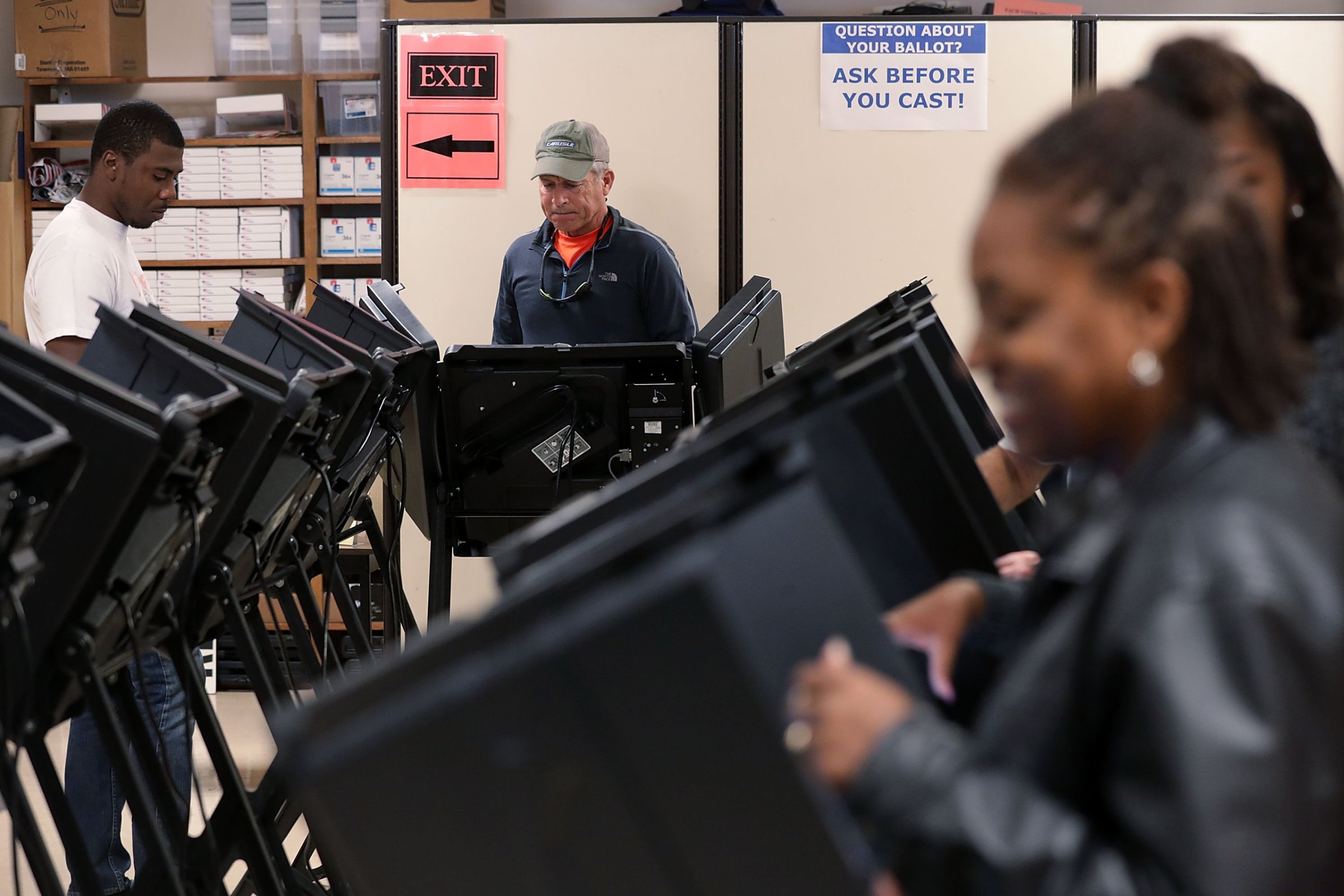
In a normal election year, when a nominee for a major political party is not questioning the fundamental process undergirding our 240-year-old democracy, voting machines malfunction.
Occasionally, they malfunction in such a way that votes appear, temporarily, to be “flipped”: a voter intends to vote for Candidate A, but Candidate B’s name is selected on the screen.
This kind of glitch, known aptly as “vote flipping,” happens very rarely. Out of tens of millions of votes cast, there have been a few hundred reports of vote flipping every year for the past decade. This year is no exception. A handful of counties in North Carolina, Texas and Nevada have reported isolated problems with machines vote flipping in the last couple weeks.
But this time around, with Donald Trump alleging on an almost daily basis that the election is being rigged and with unfounded rumors of Russian hackers undermining election results, these run-of-the-mill machine errors have taken on a dark air of conspiracy.
“A lot of call-ins about vote flipping at the voting booths in Texas,” Trump tweeted Thursday morning. “People are not happy. BIG lines. What is going on?”
Commenters on Breitbart.com, a conservative website formerly run by Donald Trump’s campaign manager, Stephen Bannon, have also seized on early reports of vote flipping as “evidence” that the election is indeed being “stolen” by a murky cabal of Washington insiders, the mainstream media and the Clinton campaign.
The truth is much more banal: voting machines are more than a decade old. They’re sticky and glitchy. And people make mistakes.
“You have to remember that the majority of the machines in use today predate the iPhone or the iPad, and most of them use technology from the late ’90s,” Lawrence Norden, a voting technology expert at the Brennan Center for Justice in New York, told TIME. “As these machines age, you start to have hardware issues.”
For example, as the glue that attaches the screen to the machine gets degraded, you get alignment issues, Norden explained. Poll workers and technicians have to recalibrate these machines regularly to ensure the buttons are aligned correctly, he said.
In other cases, it’s a problem of plain old user error, said Pamela Smith, the president of Verified Voting, a nonpartisan organization that advocates for accurate and transparent elections.
In Texas, for example, where a handful of voters reported attempting to vote a straight Republican ticket, but found the Clinton/Kaine ticket selected instead, many precincts use an old, rotary-style voting machine. “If you’re used to using a mouse and then you’re asked to use a track pad, it’s easy to make a mistake,” Smith told TIME. It’s not difficult to imagine that a handful of voters might have the dial land on the wrong line by accident, she said.
But if and when mistakes like that happen, she added, voters can go back and fix them. “If you select one candidate and the other appears on the screen, or if you’re looking at the summary screen, and something doesn’t look right, you can go back to any of the contests and make a change,” she told TIME. And if, for any reason, you don’t trust the machine you’re using, she said, voters should notify the local officials.
“Ask a polling worker to cancel out your session or use a new machine, or cast a paper ballot,” she said.
Another way that voters can protect themselves, Smith added, is to double-check their voting machines’ paper print-outs. In states like North Carolina, where there have been a several reports of vote flipping during early voting in the past few days, all machines produce a hard-copy paper print-out of every vote cast. “That’s your ballot. That’s what gets checked during an audit,” she said.
Norden, who has pushed for state and federal governments to invest in new voting machines, says recent concerns over vote flipping should be seen in the larger context of allegations of election rigging. “If you really stop to think about it, vote flipping doesn’t make sense as a way to rig the election,” he said. “If that was your goal, you wouldn’t tell a voter on the screen that they had selected a different candidate. You wouldn’t make it possible for them to notify authorities or correct their vote.”
Kay Stimson of the National Association of Secretaries of State said the real problem is the current climate of conspiracy, which threatens to undermine the legitimacy of the election itself. Thirty-six states are currently overseeing some form of early voting and the overwhelming majority of precincts have not reported any problems, she said. In the isolated areas where there have been reports of vote flipping, officials have taken the appropriate steps to recalibrate machines and, in some instances, have taken them out of circulation.
In Mecklenburg County, North Carolina, for example, two machines were removed from a polling place after complaints of vote flipping, according to National Public Radio. Technicians were not able to later duplicate the problem.
“There’s a lot of anxiety about rigged elections and Russian hackers so this kind of concern could give people the wrong impression about the legitimacy of the process,” said Stimson. “There’s a real concern that that kind of rhetoric could blow up.”
More Must-Reads From TIME
- The 100 Most Influential People of 2024
- The Revolution of Yulia Navalnaya
- 6 Compliments That Land Every Time
- What's the Deal With the Bitcoin Halving?
- If You're Dating Right Now , You're Brave: Column
- The AI That Could Heal a Divided Internet
- Fallout Is a Brilliant Model for the Future of Video Game Adaptations
- Want Weekly Recs on What to Watch, Read, and More? Sign Up for Worth Your Time
Write to Haley Sweetland Edwards at haley.edwards@time.com